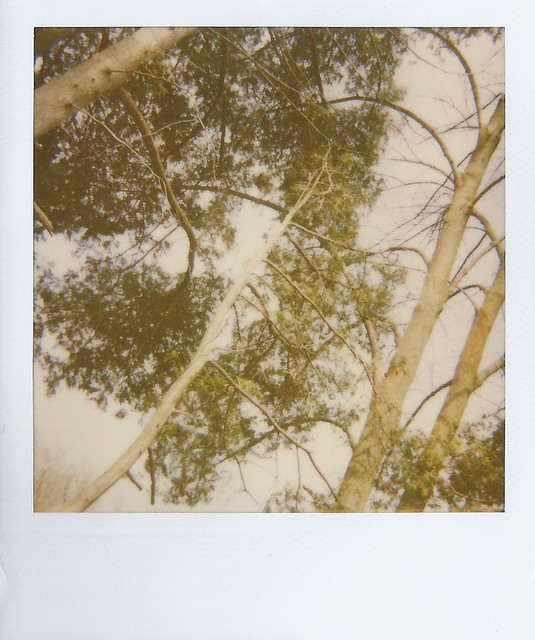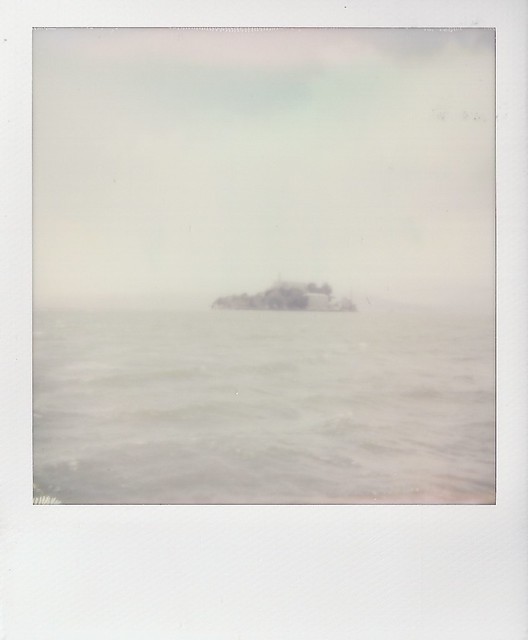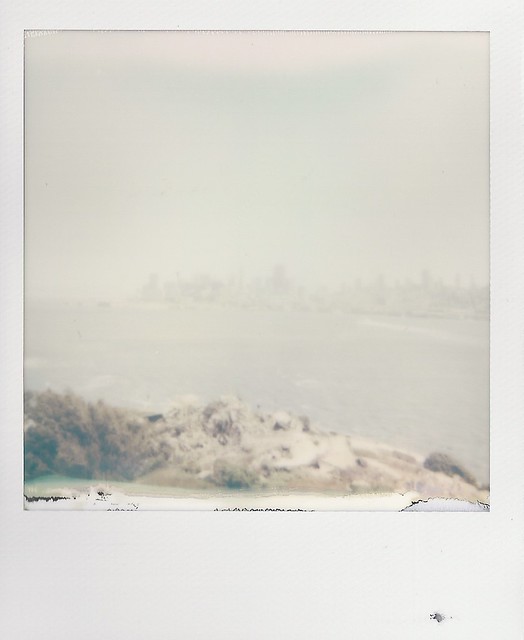Hi! So, let’s get Polaroiding here. In my third instalment of In Search of the Perfect Polaroid, I’m going to be using this picture:
Now, my tip for instant photography today comes from the story behind this picture. I was only starting to be interested in Polaroid photography, and was kind of just in it for indie credit. See, I would really prepare for these pictures, setting them up just so and wearing the perfect outfit and getting the light just right, because I wanted them to look as effortless as possible. This particular fall day, I wanted a photo of my sister and I sitting up in a tree looking all chill and outdoorsy, so I persuaded her and my mom to go out on the trail near our house to take it.
We walked out to this tree that was a little off the trail, down a hill. My sister and I climbed up, got in our pose, and my mom was about to take the picture, when she lost her balance standing on the side of the hill, fell down on her back and started to slide down towards, yes, the river. My sister was screaming, “Mom!” and I was screaming, “My camera!” and my mom was just screaming. We leapt down from the tree and thank goodness, caught her just before she slid into the frosty water. She was okay, and much less importantly, the camera was okay, but when she stood up again she hesitantly told me that her finger had pulled the trigger as she was sliding, and the camera had ejected my last Polaroid picture. I was crushed. I really was. I was pretty mad, too. I had put on this great outfit, arranged the little hike and had entrusted my camera to my mom. I regretted the afternoon already.
But then, as we walked home and the picture developed, I saw how really… natural it was. I mean, yeah, there’s nature in it, but it just looks, like, actually effortless, you know? So then I completely turned my attitude around and kept thanking my mom for taking such a fabulous photograph; I don’t know if she or my sister was really impressed with my rapid change in perspective, considering it mostly revolved around the photo and myself. But then, as we walked on and got home, I finally just started to smile at the picture in my mind of my mom sliding down the bank towards the river, and the picture of my caring sister giving no thought to my art and just trying to save our mother. And then they started to smile, and we all started to laugh, and couldn’t stop; long after I put the picture away (until now), we were laughing, about how the afternoon had gone completely wrong and turned out so well.
So, today’s tip is kind of two-fold: first, in a technical sense, don’t be upset when your photo turns out totally different than you expected it to, because it usually will, and second, be natural – don’t try too hard to be indie and effortless in your photography. And second, in an abstract sense, remember that every picture has a story. Every photo has a frame outside of the physical one, a frame that transcends what you can see and is just a good memory. So really, don’t look so hard at the picture that you forget where you were when you took it.
RJ
P.S. Thank you to my mom for being the most genuine artist I know; I should have never doubted your ability to take an amazing picture.


